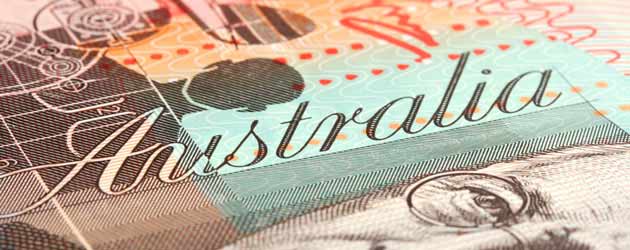
The Pound to Australian Dollar exchange rate (GBP/AUD) tumbled by around -0.65 cents earlier this morning as the second quarter Australian GDP print beat expectations of 0.5%, coming in at 0.6%. The annualised figure also impressed at 2.6%, beating forecasts of 2.4% and extending a run of 21 years of uninterrupted growth.
The ‘Aussie’ was also supported by a better-than-anticipated Services print in its most lucrative export market, China. The HSBC/Markit Services PMI report accelerated from 51.3 to 52.8 during August, and this was seen to reflect positively on potential trade performance between the two nations going forward.
The Australian Dollar also rallied by around 1.2 cents during the day yesterday in reaction to the latest Reserve Bank of Australia policy statement. The RBA maintained its current record low interest rate of 2.50% and struck a fairly neutral tone with regards to the Antipodean economy.
GBP/AUD is currently trading close to 1.7110, which is around three cents lower than it began the week.
RBA Governor Glenn Stevens said that growth was still below target, but did not give any fresh hints that the Central Bank was considering cutting rates again:
“The board will continue to assess the outlook and adjust policy as needed to foster sustainable growth in demand and inflation outcomes consistent with the target.”
The RBA has cut its benchmark rate eight times in the last two years and it seems that the Central Bank has decided to give the latest reduction a little more time to work its way through the economy before acting again.
The previously ubiquitous dovish line: “we see scope to ease policy further” was omitted and this boosted demand for the ‘Aussie’.
With RBA and GDP announcements printing to the upside, the Australian Dollar was able to shrug off another fairly disappointing AiG Performance of Service Index score of just 39.0 – well below the 50.0 mark that separates growth from contraction.
The Pound was supported by a stronger-than-expected UK Construction PMI result of 59.1, which was the best score since September 2007. The near-6-year high shows that the burgeoning economic recovery in Britain is going from strength to strength and suggests that Sterling may continue to advance against its major rivals.
This morning’s UK Service Sector score is predicted to come in at 59.0, slightly lower than July’s 6-year high of 60.2. However, if the hugely influential private sector reading follows the Manufacturing and Construction Purchasing Managers Indexes in printing stronger-than-expected then the Pound is liable to rally versus the majors.

Comments are closed.